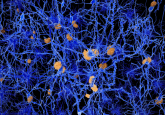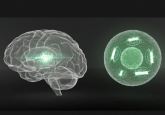Protein nanowires that can learn as fast as the human brain

Neuromorphic computing, that is, emulating the neurological functions of the human brain through artificial intelligence, has been a new and largely unexplored area of medicine over the last few decades. Recent advances have used nanotechnology to create protein nanowires for greater electrical conductivity in biomedical applications. In a recent paper published in Nature Communications researchers from the University of Massachusetts Amherst (UMass Amherst; MA, USA) developed protein nanowires to use as electrical filaments in a memory transistor – ‘memristor’ – to carry signals between neurons in the brain. The remarkable thing about this technology is that the memristor runs on...
To view this content, please register now for access
Join our member community for FREE to access a collection of journal and online-only features, including:
- Exclusive access to educational videos, eBooks and insights into top BioTechniques journal articles
- The latest news and journal updates delivered straight to your inbox when you want it
- Personalized recommendations for the latest member-exclusive podcasts, interviews and expert opinions
- Priority registration to webinars, panel discussions and events
- Access to competitions and journal publication discounts, including 10% off open access fees when you sign up today!





